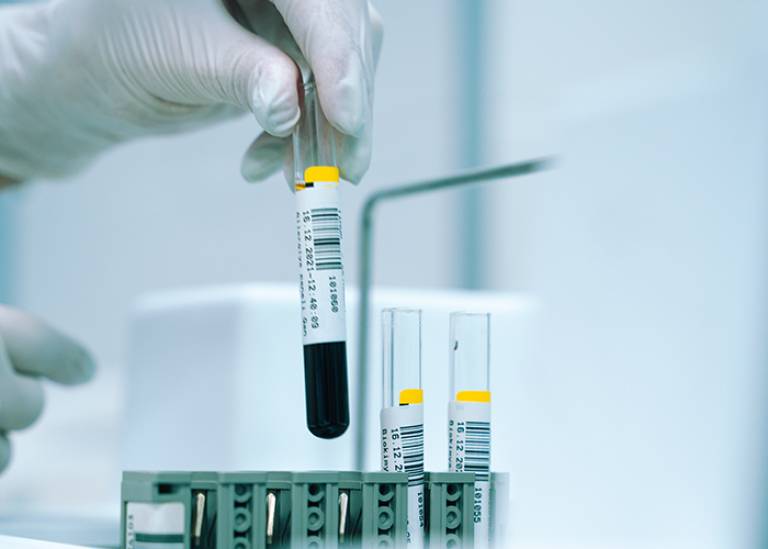New study identifies blood test that can track progression of fatal brain disease
8 March 2023
A study led by Dr Viorica Chelban with co-author Professor Henry Houlden (both UCL Queen Square Institute of Neurology) has shown that a single biomarker can accurately measure the progression and response to treatment in people with Multiple System Atrophy.

Multiple System Atrophy (MSA) is a neurological disease that currently has no known cure. It has an estimated prevalence of 4-5 per 100,000 individuals in Europe and North America.
Identifying biomarkers are crucial to provide more reliable assessments of treatment response, particularly when combined with clinical evaluation and brain scans.
This study, published in Brain journal, tested the Neurofilament light chain (Nfl) protein as a biomarker to track progression of MSA. Nfl is a key component molecule responsible for maintaining cell integrity and, importantly, can be assessed using a standard blood test.
Over 200 people with MSA took part in the study, led by UCL in collaboration with MSA specialist centres around Europe. Results showed that concentrations of NfL in the blood were higher in MSA patients compared to healthy controls.
These findings can have implications on not only disease monitoring, but also in fast-tracking the development of drug trials by establishing a biomarker that is both accurate and efficient.
Lead author Dr Viorica Chelban (UCL Queen Square Institute of Neurology) said:
“NfL protein has been explored as a reliable biomarker in several neurodegenerative disorders but data in MSA have been limited. Therefore, NfL was not routinely used as an outcome measure in MSA until now. In this large and well-characterised MSA cohort we found that NfL correlates well with disease severity, particularly in the earlier stages of disease. Having a blood test that allows us to monitor the disease, as an alternative to a lumbar puncture, is very helpful. An ideal biomarker for MSA should be closely linked to the disease mechanism, reliable, accurate, sensitive, specific, reproducible, non-invasive and acceptable for the patient - and inexpensive.”
LINKS:
- UCL Queen Square Institute of Neurology
- Neurogenetics Lab
- Dr Viorica Chelban’s academic profile
- Professor Henry Houlden’s academic profile
- Neurofilament light levels predict clinical progression and death in multiple system atrophy
Photo by Akram Huseyn on Unsplash
 Close
Close

